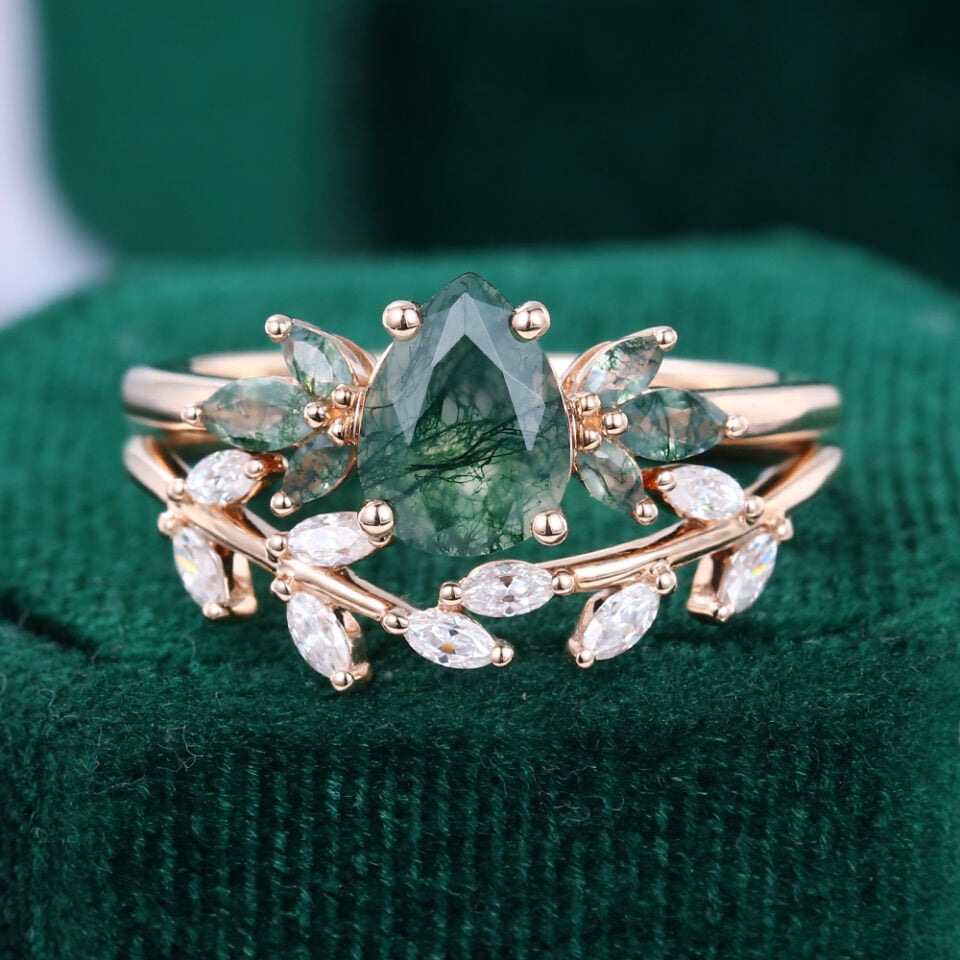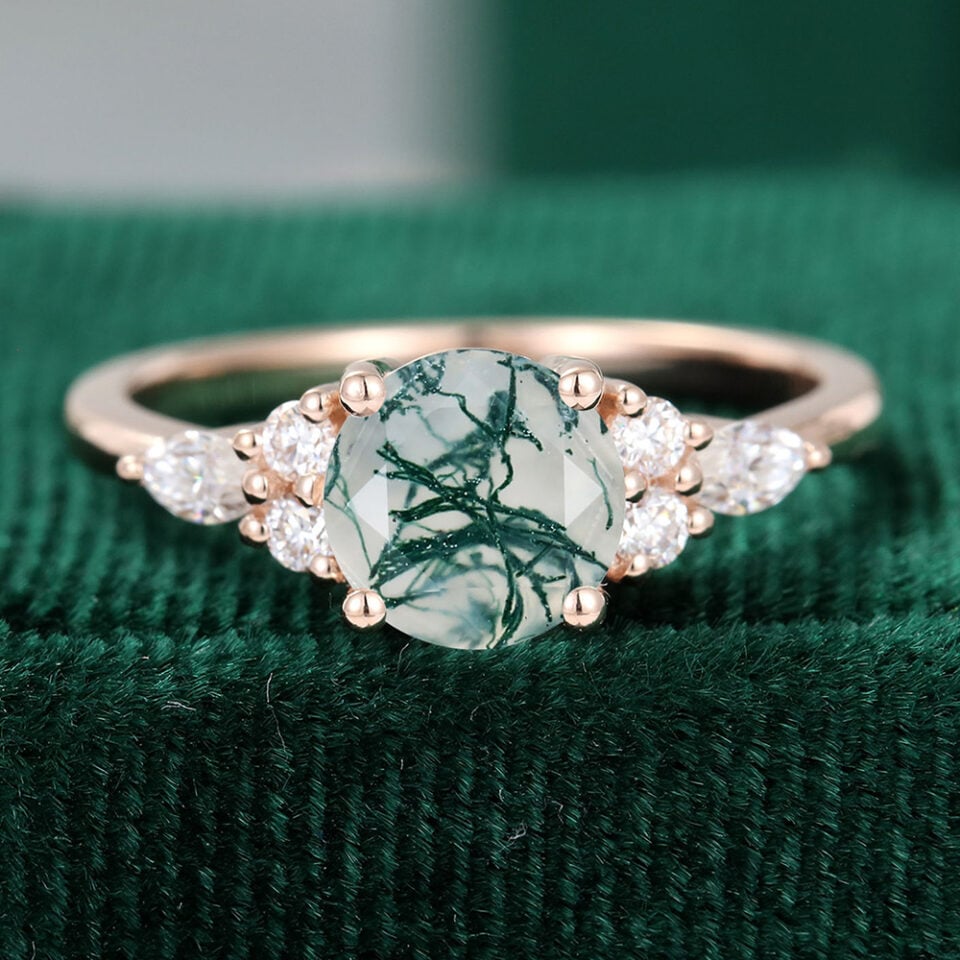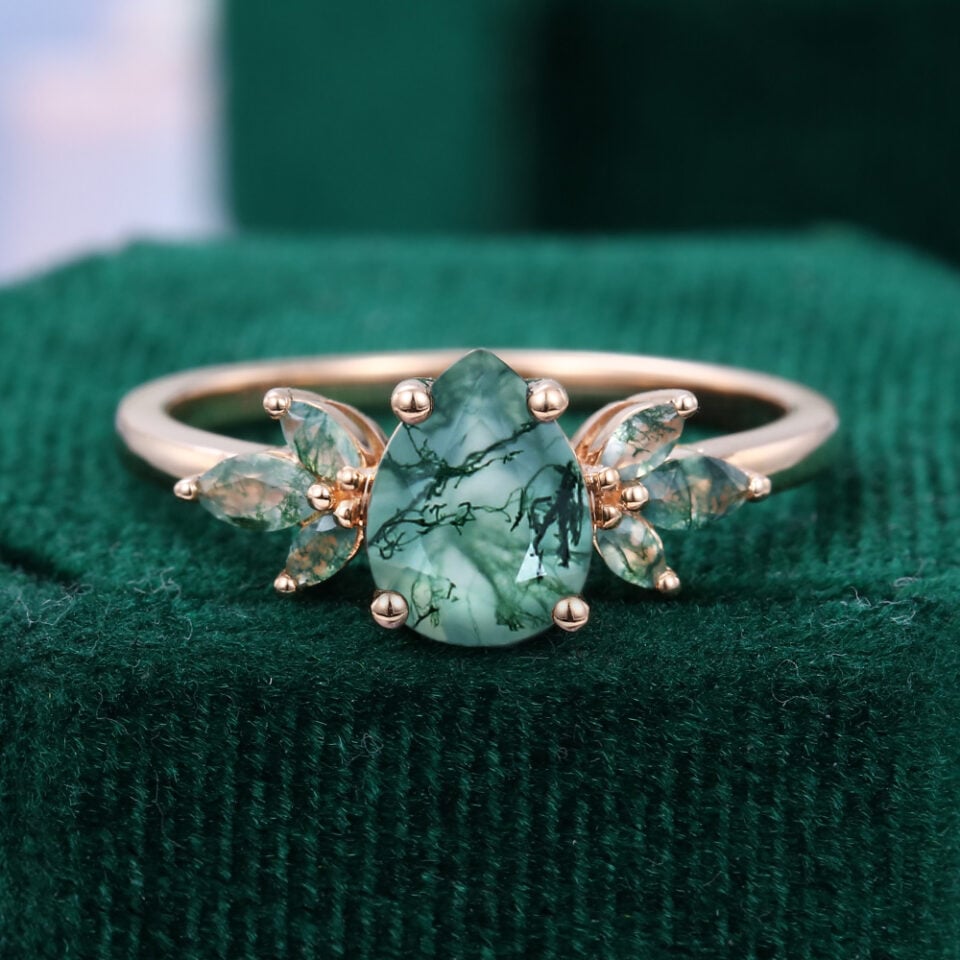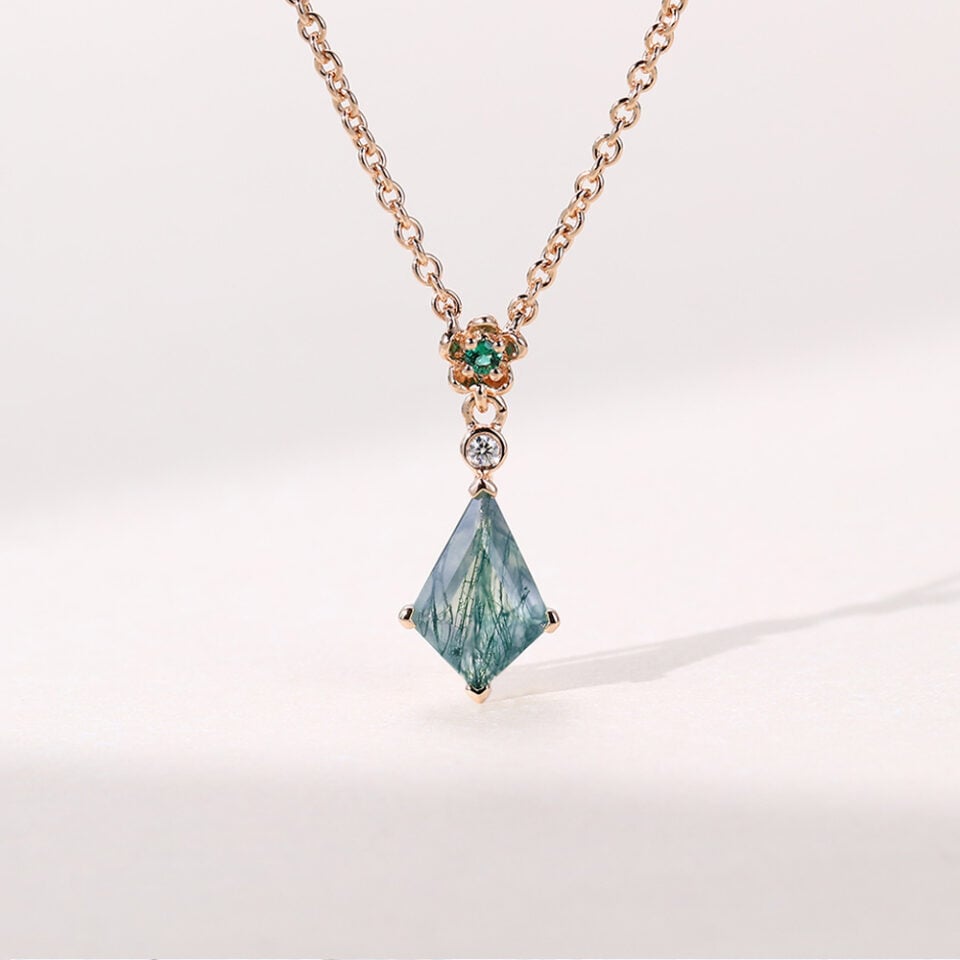- by MollyJewelryUS
- October 21, 2024
- Gemstone Guide
Last updated on October 27, 2025
Moss agate has a quiet kind of beauty — soft green patterns like forest moss floating in a misty world. It’s calm, grounding, and perfectly unique in every piece. But because of its growing popularity, fake or dyed versions are everywhere online.
If you’ve ever wondered whether your moss agate is real, this guide will help you see the difference — from what this gem actually is, to how to spot imitations, and what to check before buying.
Table of Content
Table of Content
1. What Is Moss Agate? Key Characteristics
Moss agate isn’t your typical gemstone. It’s a translucent form of chalcedony that captures delicate, moss-like inclusions inside. These aren’t plants — they’re iron or manganese minerals naturally formed millions of years ago when water seeped through volcanic rocks.
The result? Each stone looks like a tiny piece of nature — green branches, foggy landscapes, or even tiny trees suspended in stone. That’s why moss agate is often called “the gardener’s stone” or “the stone of growth and balance.”
Real moss agates come from regions like India, Brazil, Indonesia, and the U.S. (especially Montana) — each with slightly different clarity, color, and pattern density.
2.How to Distinguish Between Real and Fake Moss Agate: 7 Practical Tips
Having understood the basic characteristics of moss agate, let’s move on to the main topic – distinguishing between real and fake moss agate! Here are 7 tips:
Tip 1. Observe the Inclusions
Tip 1. Observe the Inclusions
Observing the inclusions is a key step in identifying genuine moss agate. Real moss agate inclusions are naturally formed and resemble branches or moss in the natural world, typically irregular in shape. If the inclusions in your moss agate appear natural and irregularly distributed, it’s likely to be real! If you notice the inclusions are too perfect, symmetrical, or look like printed patterns, beware; it could be a fake. Remember: every natural moss agate is a masterpiece of nature, no two are exactly alike.
Tip 2. Touch and Density
Tip 2. Touch and Density
Natural moss agate has a certain weight to it and feels cool to the touch. Many imitations or glass-based products are often lighter and don’t feel as solid as real stone. If you feel a cool sensation when lightly touching the stone, it’s likely a real natural moss agate. If it feels warm or lightweight, you should double-check its authenticity.
Tip 3. Observe Through Light
Tip 3. Observe Through Light
Moss agate is a semi-transparent stone, and you can check its transparency by shining a bright light or flashlight through it. If the gemstone is overly transparent or shows obvious signs of filling, beware. Natural moss agate should have natural internal patterns but not be completely transparent—some areas will be hazy or irregular.
Tip 4. Use a Magnifying Glass to Inspect Details
Tip 4. Use a Magnifying Glass to Inspect Details
A magnifying glass or jeweler’s loupe is a great tool for you to identify moss agate as real or fake. By closely examining the stone under magnification, you can get a better look at the tiny inclusions. The inclusions in natural moss agate should be random and irregular, while fake patterns are often mechanical and easy to spot.
Tip 5. Look for Bubbles
Tip 5. Look for Bubbles
In some fake moss agates, especially glass imitations, you may find small bubbles. Natural gemstones don’t form these bubbles during their creation. So, if you spot bubbles in the stone, it’s almost certainly not real moss agate.
Tip 6. Test Hardness
Tip 6. Test Hardness
The hardness test is a simple and effective method. Moss agate has a Mohs hardness of 6.5 to 7. This means that it can easily scratch glass without leaving a mark on the gemstone itself. If you have an inconspicuous area, try lightly scratching a glass surface. If the glass gets scratched and the stone remains intact, your moss agate is likely real.
Tip 7. Seek Professional Appraisal
Tip 7. Seek Professional Appraisal
Of course, if you’re unsure of your own test results, the safest course of action is to ask a professional jewelry appraiser to help you confirm the authenticity. Professional appraisers have the specialized tools and knowledge to accurately determine if your stone is genuine. They can also provide detailed information about the gem, such as its origin or any treatments it may have undergone. Alternatively, buy from jewelers who offer professional gem certification, which can go a long way in safeguarding your purchase!
With these 7 tips, I believe you can better distinguish real from fake moss agate. MollyJewelryUS is a professional gemstone jeweler, and we offer IGI gem certification with all our stones, ensuring the value and quality of your purchase!
3.Fake vs. Real Moss Agate
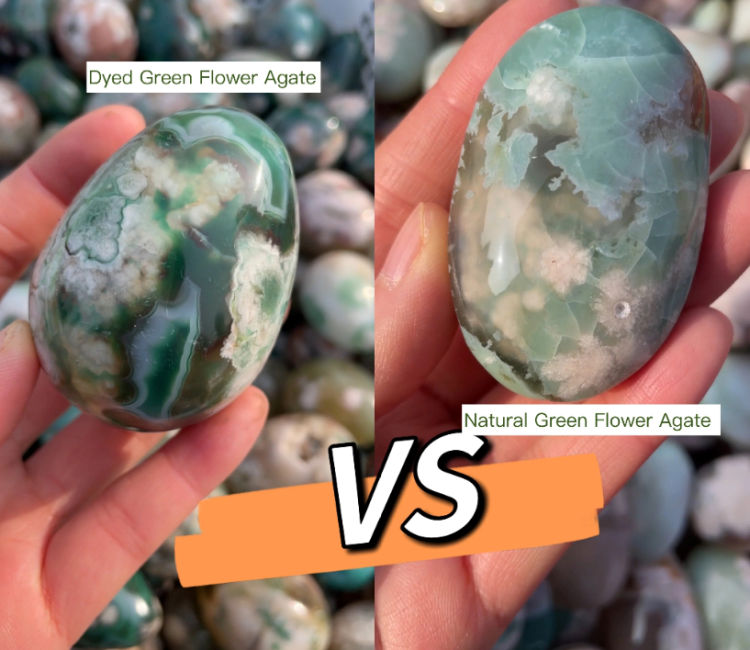
-
The color is overly vivid and uniform, appearing as an unnatural bright green.
-
The “moss-like” inclusions have sharp, distinct edges, looking as if they were artificially drawn without natural gradation.
-
There’s a noticeable artificial trace, with the inclusions lacking the randomness and organic growth pattern of real moss agate.
-
The color is soft and subtle, with the green inclusions (resembling moss or branches) showing a natural variation in shades.
-
The boundaries between the inclusions and the chalcedony base are blurred, creating a seamless transition.
-
The inclusions are irregularly distributed, just like plants growing in nature, exhibiting a genuine organic texture.
4.What to Check When Buying Moss Agate
Before clicking “add to cart,” take a moment to check these essential details — especially when shopping online.
✅ Buying Checklist:
✅ Buying Checklist:
- Look at the pattern: Real moss agate should have irregular, organic inclusions — no two are alike.
-
Check the transparency: Slightly cloudy or milky is normal; if it looks perfectly clear with green streaks, it’s likely fake.
-
Avoid overly bright greens: Natural moss agate has earthy, muted tones.
-
Ask for origin information: Ethical sellers will note the source (India, Brazil, Indonesia, or the U.S.).
-
Examine photos under light: Ask the seller for different angles to ensure the color isn’t digitally enhanced.
-
Check the store’s credibility: Choose reputable sellers who specialize in genuine gemstones — not generic “fashion jewelry.”
💡 Tip: If you’re shopping for a moss agate engagement ring, look for keywords like “natural moss agate,” “hand-cut,” or “untreated stone” on the product page.
5.How to Care for Moss Agate
Moss agate is fairly durable (Mohs hardness 6.5–7), but it’s still a natural stone that benefits from mindful care:
-
Clean gently with warm, soapy water and a soft cloth.
-
Avoid ultrasonic or steam cleaners.
-
Store separately from harder gems to prevent scratches.
-
Keep away from strong chemicals or perfumes.
With proper care, your moss agate can stay luminous for decades — even becoming a family heirloom.
6. Conclusion
Real moss agate is more than a gemstone — it’s a tiny work of nature, a calm forest captured in stone. While fake versions flood the market, knowing what to look for will help you choose wisely and confidently.
Whether you’re drawn to its grounding energy or simply its timeless look, a genuine moss agate ring will always stand apart for its authenticity and natural beauty.
Related Readings:
Related Readings:
Our Featured Moss Agate Jewelry
Our Featured Moss Agate Jewelry


